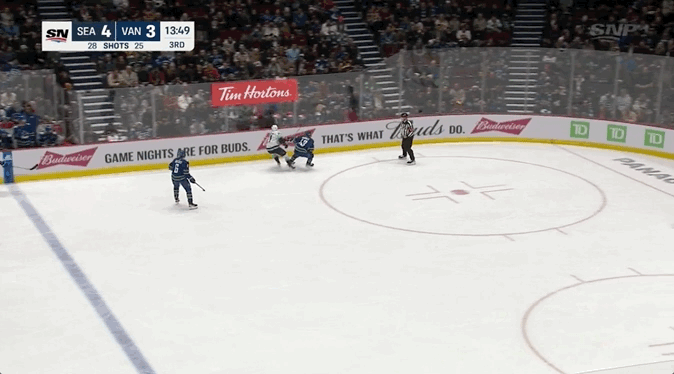The Seattle Kraken rang in the new year by tearing through Canada, outscoring the Oilers, Maple Leafs, Senators and Canadiens 22-7 in four wins. Overall, they have won six consecutive games by a combined score of 30-11.
In their second season, the Kraken have turned into an offensive powerhouse, ranking third in the NHL with 3.68 goals per game — a full goal more than they averaged a year ago. Their goal differential has swung from minus-69 to plus-22.
As we arrive at the midway point of the season, Seattle is in third place in the Pacific Division, five points ahead of Calgary and seven ahead of Edmonton with two games in hand on both.
The Flames’ and Oilers’ playoff hopes most likely hinge on the Kraken falling off down the stretch. What are the chances of that happening?
There are reasons to be skeptical of the Kraken’s turnaround, starting with their offence. The Kraken, whose 106 goals at 5-on-5 lead the NHL, have scored around 28 more goals than expected in that situation — by far the most in the league. The Canucks are the next-closest team at around 21 goals above expected.
Seattle added a couple of high-end finishers this season, leading to a more balanced attack that features 10 players with at least 20 points. Two others — Oliver Bjorkstrand and Alex Wennberg — have 19 points.
Free-agent signing Andre Burakovsky is on pace for a career-high 23 goals and 72 points. Rookie phenom Matty Beniers, who leads all first-year players with 16 goals, has scored on 17.5 per cent of his 5-on-5 shots over 50 games since debuting late last season.
That alone, though, does not explain the Kraken’s offensive explosion. In fact, their overall shot quality on a per-game basis is slightly weaker than it was last season, when they finished tied for 28th in total goals.

The Kraken are an opportunistic bunch. They have scored a league-leading 50 goals within 10 seconds of a turnover. That quick-strike offence has helped ward off regression.

It is possible that the Kraken continue to ride this momentum for the rest of the season, but what if the offence dries up? Should we expect leading goal-scorer Jared McCann, for example, to keep scoring at a 26.4 per cent clip, more than double his career average? It seems unlikely.
The Kraken are 0-10-1 when scoring two or fewer goals — one of six teams without a win under those circumstances and, along with the Flames, one of two in a playoff spot.
Defensively, Seattle is slightly below average at 5-on-5, ranking 21st with 1.88 expected goals against per game. That is the worst mark among teams in a playoff position.
Goaltending remains the biggest area of concern. The Kraken’s .892 save percentage in all situations is identical to last season’s, though their 5-on-5 percentage has improved from .901 to .917. The difference this season is that the Kraken are outscoring their defensive issues.
Halfway through the season, the Kraken have banked enough points to withstand a rough patch, but they can be caught. Their 22.0 per cent power play is right around league average (22.2 per cent), and their 69.5 per cent penalty kill is well below it (77.7 per cent).
The Flames and Oilers, of course, have to get their games in order. If they do, things in the Pacific Division could get interesting.
All stats from Sportlogiq







COMMENTS
When submitting content, please abide by our submission guidelines, and avoid posting profanity, personal attacks or harassment. Should you violate our submissions guidelines, we reserve the right to remove your comments and block your account. Sportsnet reserves the right to close a story’s comment section at any time.